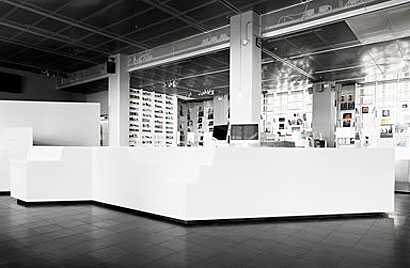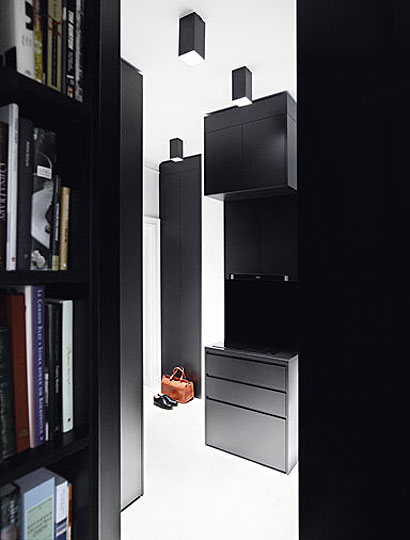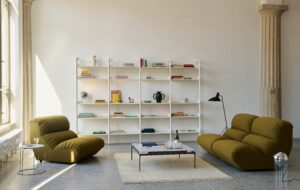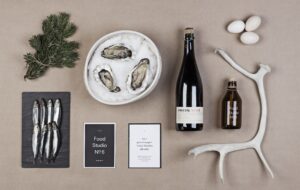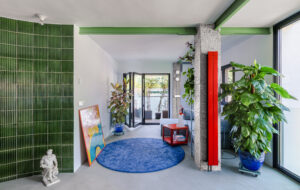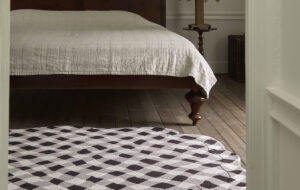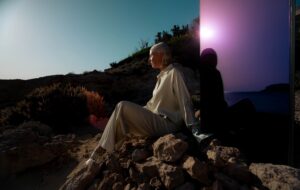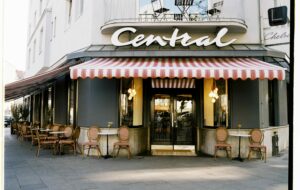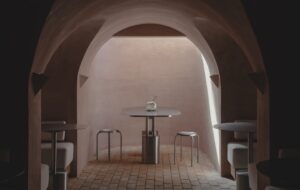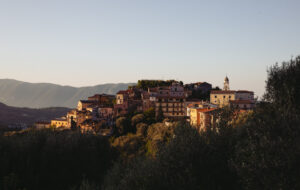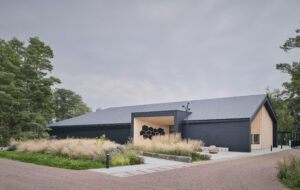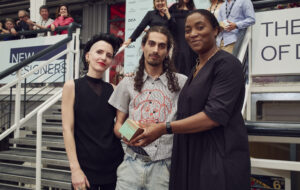|
|
||
|
Guise has just moved offices. The new space is a tabula rasa still waiting for its imprint. But the floor already has plenty of imprints. “It’s not really something we want to advertise,” says Andreas Ferm, a founder of the Stockholm-based architecture practice. “But the builders brought the wrong cement, so the floor is rather soft under our feet,” adds the other founder, Jani Myrman Kristoffersen. Guise is building a reputation for specialising in surreal interiors that move beyond the restrictions of modernism. “We are trying to find a way back to a more complex and ambivalent architecture,” says Kristoffersen. “Our approach is all about concealing and making things more mysterious.” Guise’s first project was a refit of a period apartment in a posh neigbourhood of central Stockholm in 2007. It has what can best be described as a black hole in the apartment’s core, a place where things can hide. “Beatriz Colomina has written about the connection of the discovery of bacteria and the ideology of modernism – all of a sudden people were aware of these things that could hide in corners and crevices, so there was a strive to open up and make things more accessible and light,” says Kristoffersen. “But we want to challenge that, not everything has to be about open plan.” The project quickly established Guise as an international blog phenomenon.
credit Jesper Lindström We meet in the tiny studio apartment on Stockholm’s Jungfrugatan that Guise has managed, with its spatial magic, to give the feeling of a maze. Instead of opening it up, pretending there is more space than there really is, Guise has inserted a forest of black pillars in the middle. Custom-made by the practice’s manufacturers in Eastern Europe, they conceal a kitchen and create a divide between a sleeping area and the living room, also functioning as much-needed storage. “We’ve been lucky to have such open-minded clients – without that we couldn’t have realised either of these projects,” says Ferm. And it’s easy to see why some people might be put off by the proposals. “Estate agents have been in here and just don’t know how to sell it, it’s not very easy to describe in real-estate speak,” he adds. Guise’s most high-profile project to date is the design of the entrance and shop of Fotografiska Museet, the photography museum in Stockholm that opened in May. Here confusion is a built-in feature. The irregularly cut cubes that display books in the shop are covered in polished steel, creating a bewildering series of reflections of corners, other books and visitors – like walking through a funfair house of mirrors but with a more stylish execution. It’s a relatively small project, but Guise’s insertion into the old warehouse space makes a huge impact and has already gone a long way towards creating a visual identity for the museum. Ferm and Kristoffersen met at the architecture school at Stockholm University, where they quickly became friends. “We found a way of talking about architecture that suited us,” says Kristoffersen. Often that vocabulary isn’t peppered with architecture references but allusions to art and film, and these same references are found in their projects. “The apartment on Jungfrugatan had its starting point in film as a medium,” say Ferm. “You can build claustrophobic spaces in films, a darkness from where people pop in and out, and that was the kind of thing we referred to when dividing the space and deciding on the movement in the flat.” Guise’s next project is its own office, not so much from an aesthetic perspective as ideological. “Brett Steele [director of London’s Architectural Association] has spoken a lot about how important it is to build the stage where everything will take place,” says Kristoffersen. “So here we aren’t focused on the architecture first and foremost, but the situation and the possibilities that the space brings.” It’s a vast space with potential to grow. Two new members have just joined the team, and with a growing client list they need all the room they can get. “It’s great because we can make life-size models in here,” says Ferm. “And we don’t need to worry about getting messy,” adds Kristoffersen. It’s hard to picture Guise getting messy, though.
credit Jesper Lindström |
Image Nils Odier
Words Johanna Agerman Ross |
|
|
||

